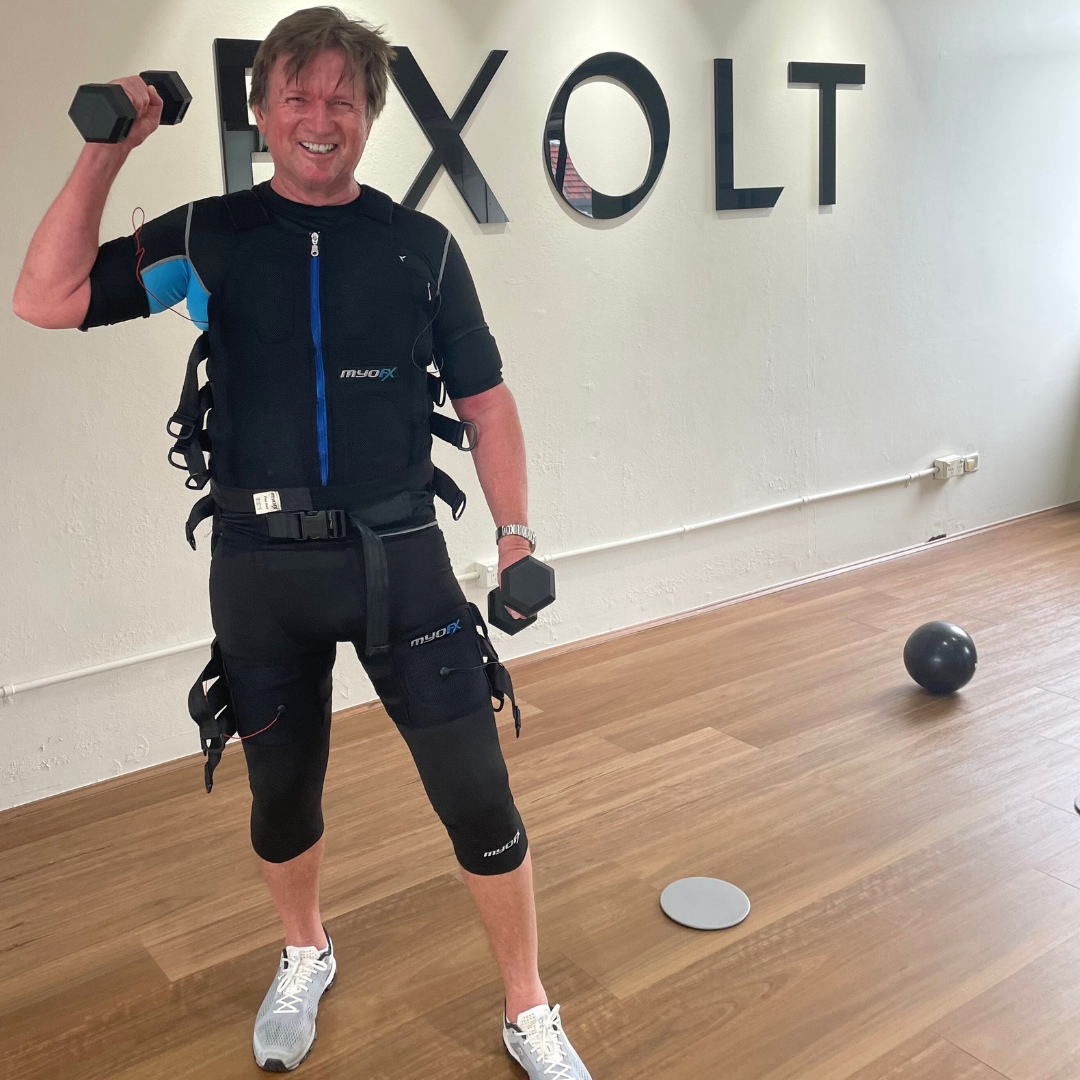Osteoporosis, a progressive bone disease characterised by decreased bone density and increased risk of fractures, affects millions of people worldwide, particularly postmenopausal women and older adults.
While traditional exercise interventions have been proven effective in mitigating osteoporosis, a technology called Electrical Muscle Stimulation (EMS) training has emerged as a potential complementary approach.
In this article, we will explore the scientific evidence surrounding EMS training and its potential benefits for individuals with osteoporosis.
Understanding EMS Training:
EMS training involves the use of electrical impulses to stimulate muscle contractions, mimicking the natural activation of muscles during exercise. These impulses are delivered via electrodes placed over specific muscle groups, intensifying muscle contractions and engaging a larger percentage of muscle fibers compared to voluntary contractions during conventional exercise.
The Impact of EMS Training on Osteoporosis:
-
Improved Muscular Strength: Multiple studies have shown that EMS training can significantly enhance muscular strength and power in individuals with osteoporosis. Increased muscle strength is crucial for maintaining balance, stability, and overall bone health, as muscles play a vital role in supporting and protecting the skeletal system.
-
Increased Bone Mineral Density (BMD): Recent research suggests that EMS training may have a positive impact on bone mineral density. A study published in the Journal of Osteoporosis found that postmenopausal women who underwent EMS training for 6 months exhibited significant increases in lumbar spine BMD compared to the control group. While further investigation is needed, these findings indicate that EMS training has the potential to slow down bone loss and improve bone density in individuals with osteoporosis.
-
Enhanced Neuromuscular Activation: Osteoporosis often leads to compromised neuromuscular function, affecting coordination, balance, and mobility. EMS training has been shown to improve neuromuscular activation, aiding in the recruitment and activation of motor units that may have become dormant due to the disease. By targeting specific muscle groups, EMS can help reactivate muscle fibers, thereby enhancing overall motor function.
-
Time Efficiency: One of the notable advantages of EMS training is its time efficiency. Research has demonstrated that short sessions of EMS training, lasting around 20 minutes, can provide similar benefits to longer traditional exercise routines. This aspect is particularly beneficial for individuals with osteoporosis who may have physical limitations or find it challenging to engage in prolonged exercise sessions.
Existing evidence suggests that this innovative technology holds promise as an adjunct therapy to combat the symptoms of osteoporosis. EMS training has shown the potential to improve muscular strength, enhance bone mineral density, optimise neuromuscular activation, and offer time-efficient exercise options for individuals with osteoporosis.
However, it is important to consult with healthcare professionals and certified EMS trainers to ensure proper guidance and safety precautions before incorporating EMS training into a comprehensive osteoporosis management plan.





